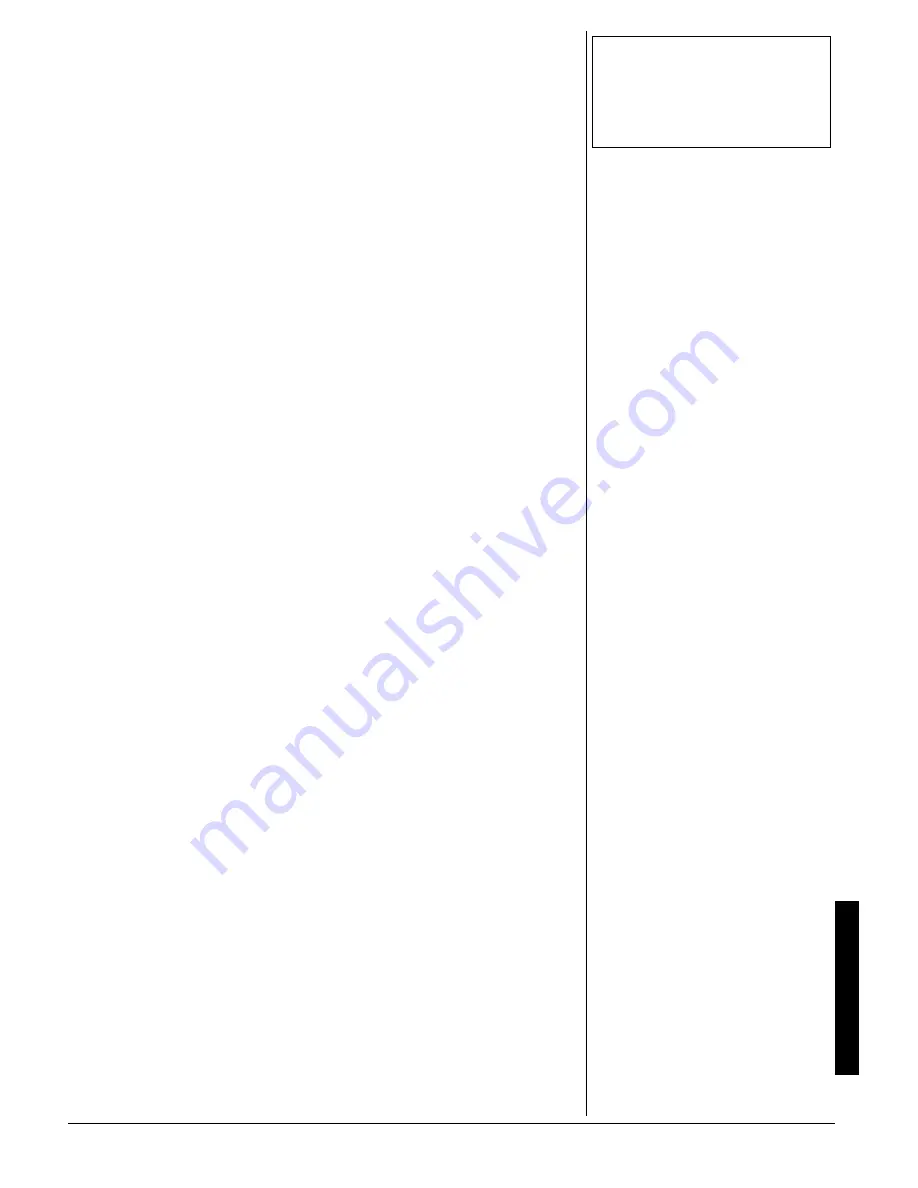
S
pecial F
eat
ures
15
the display is the number of “cents” to
which the keyboard is currently tuned,
compared to its default pitch.
2. Within 5 seconds, repeatedly press
–
or
+
to lower or raise the keyboard’s pitch.
Each time you press the key, the
number decreases or increases by 1
cent.
7
5+0)
6
17%*
4
'52105'
Your keyboard’s touch response feature lets
you adjust the volume of your music’s tone
based on how hard you strike the key(s), so
you can add emotion to your music.
1. Press
TOUCH/TRANSPOSE/SETTING
.
JekY^
JekY^
JekY^
JekY^
and the current setting (default:
(
((
(
DehcWb
DehcWb
DehcWb
DehcWb
) appear.
2. Within 5 seconds, repeatedly press
–
or
+
to select the touch response level,
e<<
e<<
e<<
e<<
JekY^
JekY^
JekY^
JekY^
,
'B_]^j
'B_]^j
'B_]^j
'B_]^j
,
(DehcWb
(DehcWb
(DehcWb
(DehcWb
, or
)>[Wlo
)>[Wlo
)>[Wlo
)>[Wlo
.
At the
B_]^j
B_]^j
B_]^j
B_]^j
setting, light key pressure
results in a loud sound, and very heavy
key pressure results in a more powerful
sound. When you select
e<<JekY^
e<<JekY^
e<<JekY^
e<<JekY^
, the
indicator next to TOUCH RESPONSE
disappears and the tone does not
change regardless of how you press
the key.
±
7
5+0)
#
5
756#+0
2
'&#.
For added flexibility and control as you
make music, you can connect an optional
sustain pedal, available through your local
RadioShack store or online at
www.radioshack.com. A sustain pedal lets
you sustain or soften the keyboard’s sound,
or even start and stop an auto-rhythm.
To connect a sustain pedal to your
keyboard, insert the pedal’s plug into
SUSTAIN/ASSIGNABLE JACK
on the back of
the keyboard.
You can adjust the keyboard to these
settings when you use a sustain pedal.
IKI
IKI
IKI
IKI
(Sustain)—Causes one or more
notes to linger after they are played.
Iei
Iei
Iei
Iei
(Sostenuto)—Similar to sustain, but
only sustains the key that was pressed
when you press the pedal.
I<j
I<j
I<j
I<j
(Soft)—Softens the sound.
h^o
h^o
h^o
h^o
— Starts or stops the selected
rhythm.
Follow these steps to change the setting for
SUSTAIN/ASSIGNABLE JACK
.
1. Press
TOUCH/TRANSPOSE/SETTING
,
then repeatedly press
I
or
J
(
CURSOR
)
until
B9:%@WYa
B9:%@WYa
B9:%@WYa
B9:%@WYa
appears.
2. Repeatedly press
G
(
ENTER
) then
repeatedly press
I
or
J
(
CURSOR
) until
@WYa
@WYa
@WYa
@WYa
and the current setting (default:
IKI
IKI
IKI
IKI
) appear.
3. Within 5 seconds, repeatedly press + or
– until the desired setting (
IKI
IKI
IKI
IKI
,
IeI
IeI
IeI
IeI
,
I<j
I<j
I<j
I<j
,
or
h>o
h>o
h>o
h>o
) appears.
Press the sustain pedal as you play to
hear the desired sound or to start/stop
the selected auto-rhythm.
#
&,756+0)
6*'
&
+52.#;
%
1064#56
1. Press
TOUCH/TRANSPOSE/SETTING
,
then repeatedly press
I
or
J
(
CURSOR
)
until
B9:%@WYa
B9:%@WYa
B9:%@WYa
B9:%@WYa
appears.
2. Press
G
(
ENTER
).
&,9edjhWij
&,9edjhWij
&,9edjhWij
&,9edjhWij
appears.
3. Within 5 seconds, repeatedly press
+
or
–
until you can view the display clearly.
The number changes from 0 to 12.
4
'5'66+0)
6*'
-
';$1#4&
The keyboard retains various settings even
when you turn the power off, so long as you
do not disconnect power. You can, however,
delete or initialize some settings without
deleting others.
1. Press
TOUCH/TRANSPOSE/SETTING
,
then repeatedly press
I
or
J
(
CURSOR
)
until
?d_j%:[b
?d_j%:[b
?d_j%:[b
?d_j%:[b
appears.
2. Press
G
(
ENTER
).
?d_jC_n5
?d_jC_n5
?d_jC_n5
?d_jC_n5
appears.
3. Within 5 seconds, repeatedly press
I
or
J
(
CURSOR
) until the item you want
to reset appears.
?d_jC_n5
?d_jC_n5
?d_jC_n5
?d_jC_n5
— Initializes the mixer
parameters you assigned by the mixer
function or by input from an external
sequencer.
?d_jFWh5
?d_jFWh5
?d_jFWh5
?d_jFWh5
— Initializes all parameters,
except for the display contrast setting.
h>oddd:[b5
h>oddd:[b5
h>oddd:[b5
h>oddd:[b5
— Deletes the data of the
user rhythm number
nnn. See “Using
the Data Download Service” on
Page 21.
?d_jIoi5
?d_jIoi5
?d_jIoi5
?d_jIoi5
— Deletes all data in the user
area.
4. Press
YES
.
Ikh[5
Ikh[5
Ikh[5
Ikh[5
appears, prompting
you to confirm the initialization/deletion.
Press
YES
again. The keyboard
completes initialization/deletion and
exits the menu setting mode.
±
016'
±
•
The touch response setting does not affect
memory playback, auto accompaniment, or
received MIDI data.
•
The MIDI data sent out from the keyboard is
affected by the touch response setting.
Summary of Contents for 42-4058
Page 23: ...23 Tone List 610 56 2 0 610 5 ...
Page 24: ...24 Tone List 2 0 610 5 106 07 ...
Page 25: ...25 Tone List 8 0 610 5 ...
Page 26: ...26 Tone List 8 0 610 5 106 07 ...
Page 27: ...27 Tone List 610 5 ...
Page 28: ...28 Tone List 610 5 106 07 ...
Page 29: ...29 Tone List 47 5170 5 75 4 610 5 ...
Page 30: ...30 Tone List 47 55 0 06 56 ...
Page 31: ...31 Tone List 0 4 14 46 ...
Page 32: ...Effect List 32 6 56 4 8 4 1475 52 ...
Page 33: ...33 Effect List 52 106 07 ...
Page 41: ...41 MIDI Implementation Chart 2 06 6 10 46 ...
Page 43: ...Notes Notes 43 016 5 ...
















































